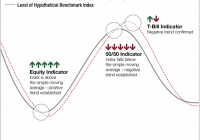4 Ways To Hedge Volatility With ETFs
Volatility levels have picked up lately though chances of a turnaround are little, at least in the near term. This is especially true as a faltering Chinese economy rattled the global markets in recent weeks and intensified fears of global repercussions. Plunging oil price, which is yet again threatening global growth and deflationary pressure, and slowdown in key emerging markets have added to the woes. All these factors might dim the chances of the Fed’s September lift-off and delay the rates hike to later this year or early next year. On the other hand, a series of upbeat data on the domestic front is supporting the prospect of a rates hike. The second estimate of Q2 GDP data came in much higher than the initial estimate, the housing market is improving, consumer confidence is rising, and the unemployment rate dropped to a seven-and-half year low. All these signaled that the U.S. economy is doing quite well on several aspects. In such a backdrop where international fundamentals are weak but domestic economy is on a firmer footing, investors may want to stay allocated to the U.S. markets and might take advantage of the beaten down prices. However, rising volatility might put their returns at risk. In order to exploit the current trend, investors should apply some hedge techniques to the equity portfolio. While there are number of ways to do this, we have highlighted four volatility-hedged ETFs that could prove beneficial amid market turbulence. Investors should note that these funds have the potential to stand out and might outperform the simple vanilla funds in case of rising volatility. How to Play PowerShares S&P 500 Downside Hedged Portfolio (NYSEARCA: PHDG ) This actively managed fund seeks to deliver positive returns in rising or falling markets that are uncorrelated to broad equity or fixed-income market returns. It tries to follow the S&P 500 Dynamic VEQTOR Index, which provides broad equity market exposure with an implied volatility hedge by dynamically allocating between different asset classes: equity, volatility and cash. The S&P 500 Total Return represents the equity component while the S&P 500 VIX Short-Term Futures Index represents the volatility component of the index. The non-equity (volatility + cash) portion makes up for one-fourth of the portfolio, while the rest goes to equity. In terms of equity holdings, the fund is widely diversified across sectors and securities. None of the firms holds more than 2.72% share while technology, health care, financials, consumer discretionary and industrials occupy the top five spots with a nice mix in the portfolio. The fund has accumulated $462.5 million in its asset base and trades in a moderate volume of around 179,000 shares per day. It charges 40 bps in fees per year from investors and was down 1.8% in the trailing one-month period. Barclays ETN+ S&P VEQTOR ETN (NYSEARCA: VQT ) This is an ETN option tracking the S&P 500 Dynamic VEQTOR Index. VQT uses volatility futures contracts directly to hedge volatility. It increases allocation to the equity component as measured by the S&P 500 Total return index, in times of low volatility. On the other hand, it increases volatility exposure as measured by the S&P 500 VIX Futures Total Return index and allocates entirely into cash if the index slumps 2% or more in the preceding 5 days. In this manner, the note manages to keep a check on volatility. The product has amassed $434.7 million in AUM while sees light volume of nearly 28,000 shares per day on average. It is a bit pricey, charging 95 bps in annual fees. The ETN lost 1.7% over the past one month. Janus Velocity Volatility Hedged Large Cap ETF (NYSEARCA: SPXH ) This ETF tracks the VelocityShares Volatility Hedged Large Cap Index and looks to hedge “volatility risk” in the S&P 500, offering investors exposure to not only the S&P 500 but also both long and inverse exposure in short-term VIX futures. The product provides target equity exposure of 85% to the S&P 500 using large cap ETFs, while the remaining 15% goes to the volatility strategy through one or more swaps. The fund trades in a light volume of roughly 7,000 shares a day and charges 71 bps in annual fees. The ETF shed nearly 3.2% in the past one-month period. ETRACS S&P 500 VEQTOR Switch ETN (NYSEARCA: VQTS ) This product entered the market 10 months ago and has been able to garner $22.8 million in its asset base. It follows the S&P 500 VEQTOR Switch Index, which seeks to simulate a dynamic portfolio that allocates between equity and volatility based on realized volatility in the broad equity market. The allocation to the equity component is dynamically adjusted to gain exposure to the S&P 500 with a target volatility of 10%. The remainder of the index is allocated to the S&P 500 VIX Futures Long/Short Switch Index that allocates between cash and long or short positions in an index of VIX futures with a constant one-month maturity. This means that when realized volatility is 10% or less, the index allocates 100% to the S&P 500 Index. When realized volatility exceeds 10%, the index allocates a portion to the S&P 500 Index and the remainder to the futures index. This approach results in higher expense ratio of 0.95%. Volume is also paltry at about 4,000 shares. VQTS was down nearly 8% over the past one month. Bottom Line Investors could definitely hedge volatility in their portfolio with the help of the above-mentioned products, which provide dynamic exposure according to the level of market volatility. These are least affected by any market turmoil and could prove great choices when it comes to protection against market downturn. Original Post
